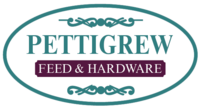Spring Cleaning: Get Your Bird Feeders, Hummingbird Feeders, and Birdhouses Ready for Feathered Guests

As the world thaws out and blossoms burst forth, our backyard bird communities are gearing up for their busiest season—and you’ll want to roll out the red carpet (or at least a clean, germ‑free table) for them. Just like we wouldn’t dine in a roadside dive, birds deserve a tidy, safe feeding station. Plus, spring cleaning your bird feeders, hummingbird feeders, and birdhouses not only keeps disease at bay but also entices a dazzling array of feathered visitors to your yard. Here’s how to transform your outdoor avian accommodations from grimy relics into sparkling bird havens—and have a little fun along the way.
Why Clean Your Bird Gear Each Spring?
-
Prevent Disease Transmission: Moistened seed and nesting debris can harbor mold, bacteria, and parasites that make birds sick.
-
Improve Food Quality: Fresh seed tastes better (we assume), attracting more species—and maybe even that elusive yellow finch you’ve been hoping to spot.
-
Extend Equipment Life: Regular maintenance helps prevent rust, rot, and gunk that shorten the lifespan of trays, perches, and houses.
Tools & Supplies You’ll Need
-
Stiff nylon brush or old toothbrush
-
Mild dish soap (no scented or antibacterial varieties)
-
White vinegar or a bleach solution (1 part bleach to 9 parts water)
-
Rubber gloves and protective eyewear (trust us on this)
-
Towels or a drying rack
-
Optional: bird‑safe disinfectant spray
Step‑by‑Step Cleaning Guide
-
Disassemble Everything
-
Remove all seed, nectar reservoirs, perches, and parts.
-
Empty and dispose of any leftover seed mix or used nesting material.
-
-
Soak in Soapy Water
-
Fill a bucket or sink with warm water and a squirt of dish soap.
-
Let feeders and removable parts soak for at least 10–15 minutes to loosen stuck‑on gunk.
-
-
Scrub Stubborn Residue
-
Use your nylon brush or toothbrush to scrub every nook and cranny—seed ports, perches, and mesh screens.
-
Don’t overlook the underside of trays and tight corners in birdhouses.
-
-
Disinfect Thoroughly
-
Rinse off soap, then soak pieces in your bleach solution or vinegar for 5–10 minutes.
-
If you prefer, mist with a bird‑safe disinfectant spray, following label instructions.
-
-
Rinse & Dry Completely
-
Rinse until water runs clear—any leftover bleach can harm birds.
-
Air‑dry in direct sunlight if possible; UV rays help kill lingering microorganisms.
-
Special Tips for Hummingbird Feeders
-
Change Nectar Frequently: Replace sugar water every 3–4 days (or every 2 days in hot weather).
-
Watch for Ants & Bees: Add ant moats or bee guards to keep your hummingbird diners from being harassed by uninvited guests.
-
Store Extra Feeders: Having a backup lets you rotate feeders out for deep cleaning without interrupting lunch service.
Birdhouse Tune‑Up
-
Inspect for Pests: Look for wasp nests, mud dauber tubes, or invasive insects and remove them carefully.
-
Repair & Repaint: Sand rough edges, replace cracked wood, and apply a non‑toxic, VOC‑free exterior paint if needed.
-
Ventilation & Drainage: Ensure ventilation holes are clear and drainage slots at the bottom aren’t clogged.
Maintenance Throughout the Season
-
Weekly Quick Rinse: Give trays and nectar reservoirs a brisk rinse every week to stave off mold.
-
Scrub Thoroughly Monthly: Even clean restorations need a refresh—repeat the deep‑clean routine every 30 days.
-
Keep an Eye on Seed Levels: Low seed invites squirrels; high seed invites spoilage. Top off just enough.
With your backyard grid sparkling and birdhouses looking sharper than a blue jay’s crest, you’re all set for a spectacular spring avian showcase. Sit back with your morning coffee (or tea) and watch as finches, chickadees, orioles, and hummingbirds flock to the feast you’ve prepared—no reservation required. Happy bird‑watching!
- Wesley Willis
